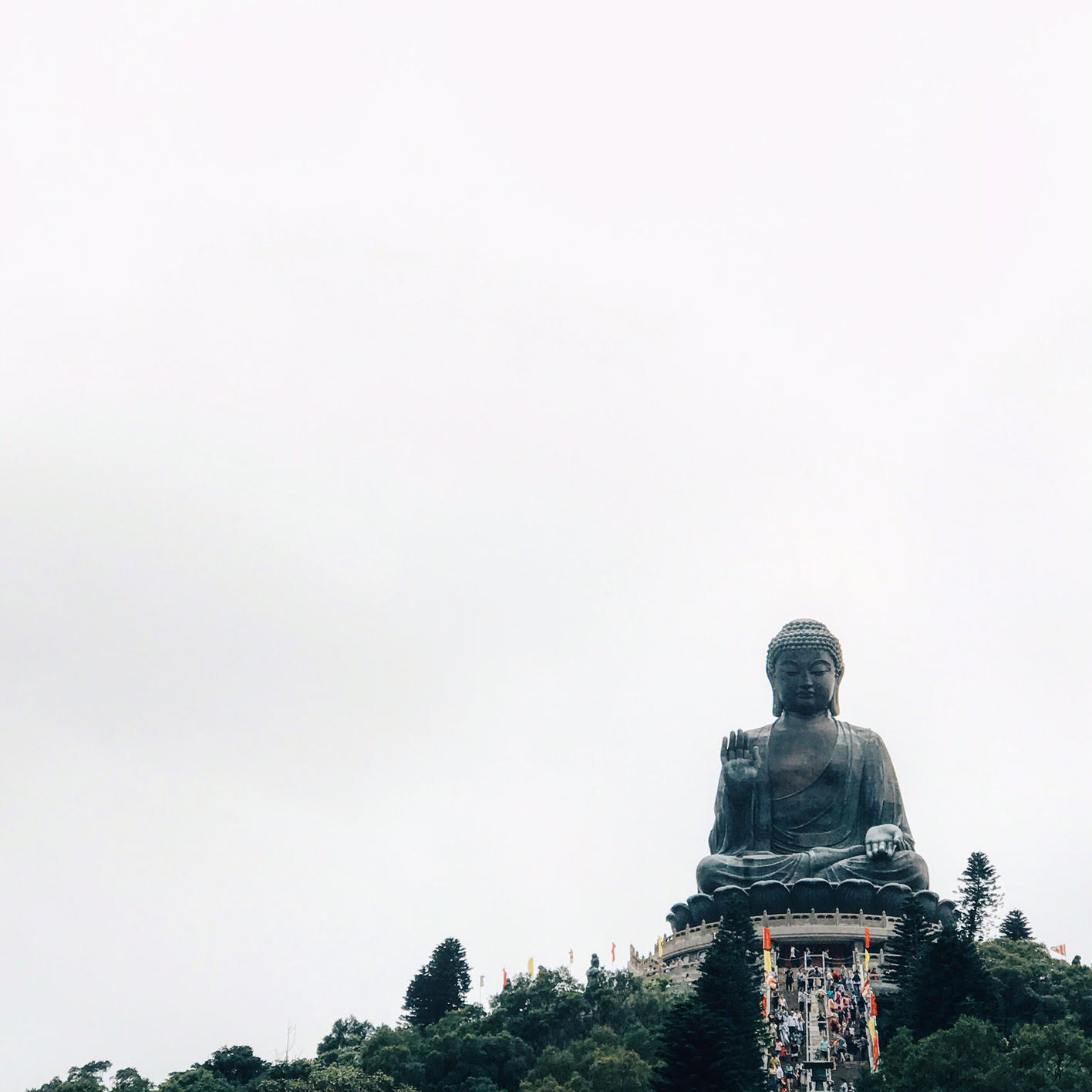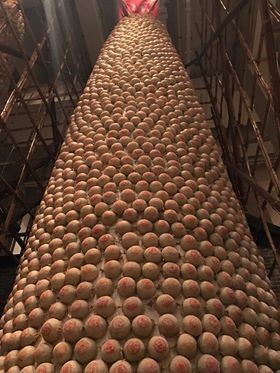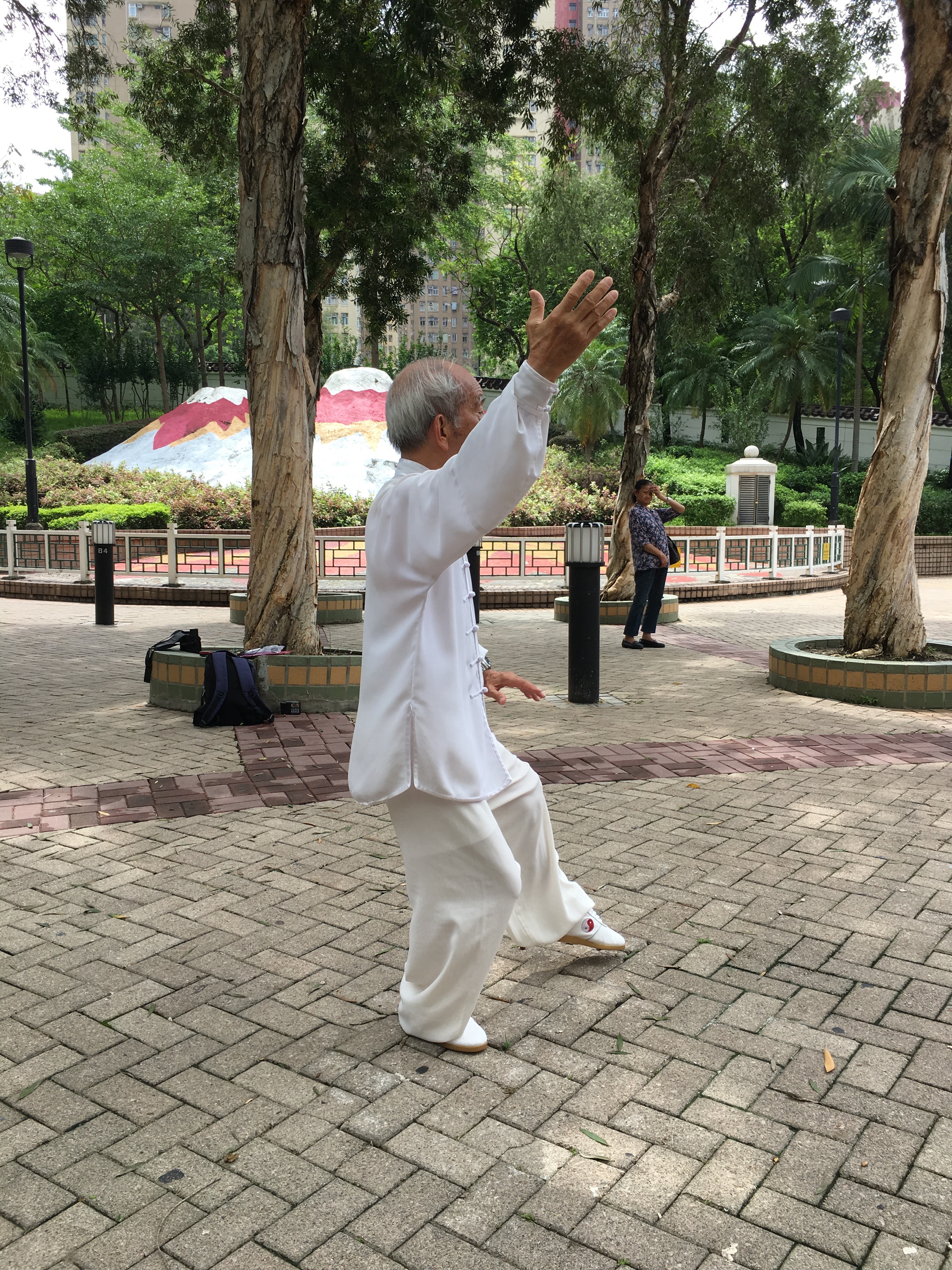I started my day in awe that my time in Hong Kong has come to an end. It felt like only yesterday that we were all anxious and excited strangers preparing for our abroad program together. Early this morning, as we all spent putting the final touches on our group presentations it start to really feel like the end. The last time we would be all together in our dorms, waiting for each other in the lobby, and walking to Poly U’s campus. And although after fourteen days together we felt like we have become locals I’m glad that we all struggles to still find the classroom where our presentations were held and the bathroom within the building. These small mishaps reminded me of how a group of strangers can become so close within a matter of days.
The Royal Treatment by Christina Dare
The Confucius Institute of Hong Kong dedicates itself to the promotion of Chinese language, exchanges, and provides local residents activities and programs to deepen their knowledge of Chinese history and traditional culture.
We were lucky enough to have the opportunity to visit the Confucius Institute of Hong Kong (CIHK) located at PolyU. We were greeted graciously by staff and invited into an elegant meeting room where we listened to a lecture about traditional Chinese ancestral worship ceremonies. I found this to be especially interesting because as a third generation American born Chinese, my family does not practice these ceremonies to the same extent that the tradition was set. I was able to connect what I know back to the original tradition and see how things have evolved through the generations over time.
By far, the best part of the day (and one of my favorite moments of the whole trip) was when we got the chance to try on traditional Chinese worshiping robes. It is hard to describe just how beautiful and intricate each one was but I will say that wearing it gave a sense of utter luxury. According to tradition, robes are worn by all – from emperors to common folk. It was explained that over time, the design of the robes evolved from different lengths, necklines and material. One by one, we were dressed by the CIHK staff who showed how each robe differed from the next and how it was meant to be worn and tied in a specific way. We had so much fun with our mini fashion show…. I think the boys had more fun than the girls!
Unfortunately it was time for us to give back the beloved robes and we continued on to some snacks that the CIHK generously provided for us. We had dumplings, bell peppers with fish paste, curry fish balls and milktea! We ate our snacks and chatted until our time at the CI came to an end.
It’s safe to say that this trip so far has been an exciting and once in a lifetime treat for all of us. I am extremely grateful for the opportunity but even more grateful towards the HK Polytechnic University, Confucius Institute and all of the staff for going out of their way to give us such a memorable and fun stay in Hong Kong!
The Big Buddha by Elliot Santiago
It started out as a beautiful day with the sun shining bright into our dorm rooms at HK Polytechnic University. We woke up to grab an amazing breakfast buffet at the TST Sheraton hotel, gifted to us by our lovely Professor Karen Harvey. Following our breakfast, our class decided to take the opportunity to visit the Tian Tan Buddha Monument on Lantau Island.
Things were looking bright as we departed on our way to the Tung Chung. However as we were slowly arriving to the station, in true typhoon season fashion, it started to storm outside. Several of us looked at each other and questioned whether or not we should still make our way to the Buddha taking into account whether or not it would still be visible with all of the fog and rain. However, we finally summoned up the “Life’s-too-short-to-say-no” type of courage and continued on with our trek. We made our way to the cable car line and waited approximately 45 minutes to hop aboard our car. The ride ended up being a little shaky as the rain constantly knocked against our car windows as we steadily made our way up the mountain. However, although there were several occasions in which we had to hold tight for our lives, the view was breathtaking and well worth it. We slowly grazed over the island and enjoyed the views of island nature, buildings, and ocean. The ride took about 30 minutes to reach the end and we headed towards the statue. Five minutes walking in, we realize the Buddha had blessed us. The rain stopped! The clouds started to slowly wither away as we got closer to the steps and things were only looking up from here. We conquered all 268 steps to the top, and enjoyed the statue and all its beauty.



Following the statue, we briefly took the time to visit the temples at the bottom of the steps. We even got the chance to purchase incense to offer it to the temple.
We then we stopped over for some delicious dessert drinks and snacks before heading back to the cable cars to head back home.
By the end of our day, we were all exhausted. It is clear that all the early mornings, long walks, and humidity are starting to take a toll on us. Our group separated for dinner and called it a night after that.
All in all, we had an amazing adventure with great views, and even better company. Our time in Hong Kong is nearing its end, but we are going to make the best out of these last days together!

Travel Back in Time by Allen Twu
History has never been the most interesting subject for me to learn about in school. Most of your time spent in class is on daydreaming about why this subject is important and mandatory to take. As I grow older, I begin to understand that history is important for us to learn about other people’s mistakes and not make them again. We also learn how cultures and traditions are formed and the meaning behind them. Today, we take a look at the Museum of History and the traditional cultures of Hong Kong.
The Museum started off from the beginning of Earth and how it was shaped and ended with modern times. I apologize beforehand as I did not take any pictures one of the first half of the museum. But we all know that the fun part is in the second half where we start seeing things we can relate to. One of them was incense and paper offerings. The smoke from the incense is said to invoke the gods and convey their prayers. The paper originated from an ancient practice where they offered real horses as burial offerings. Paper offerings nowadays resemble pictures of everyday objects such as clothes, hats, shoes, and jewelry. Papers are formed into these shapes so that the deceased will have them in the afterlife in order to live more comfortably.

Another tradition that I found really intriguing was bun mountains. Huge towers made out of bamboo and wooden poles rise up to 10 meters tall, covered with over 6,000 steamed buns, stamped in red ink with the word shou, which means longevity. This offering originated from the belief that the buns will be offered to the gods which in return would drive away evil spirits and protect the land.

Also in the museum is a section where you can write on a piece of paper for a wish and hang it on a tree. This tradition originated from Lam Tsuen Village in Tai Po. People would write their names, date of birth and wishes. Afterwards, they would throw the paper at the tree. If the paper can be successfully hung, your wishes will come true.

Tai Chi: A Gentle Way to Fight Stress
Tai chi is an ancient Chinese tradition that, today, is practiced as a graceful form of exercise. It involves a series of movements performed in a slow, focused manner and accompanied by deep breathing. It is a noncompetitive, self-paced system of gentle physical exercise and stretching. Each posture flows into the next without pause, ensuring that your body is in constant motion.
Tai chi is low impact and puts minimal stress on muscles and joints, making it generally safe for all ages and fitness levels.
When learned correctly and performed regularly, tai chi can be a positive part of an overall approach to improving your health. The benefits of tai chi may include:
Decreased stress, anxiety and depression
Improved mood
Improved aerobic capacity
Increased energy and stamina
Improved flexibility, balance and agility
Improved muscle strength and definition
Enhance quality of sleep
Enhance the immune system
Help lower blood pressure
Improve joint pain
Improve symptoms of congestive heart failure
Improve overall well-being
Reduce risk of falls in older adults








